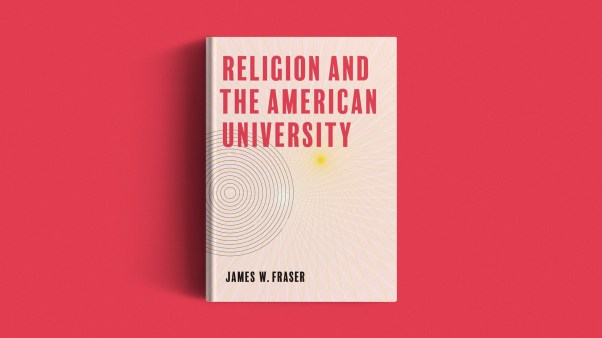Therapeutic abortion is to some a blessing, to others murder. Most people see it as the conclusion to a highly unfortunate situation in which two lives appear to compete with each other. What guidelines are there for prescribing—or not prescribing—this drastic step?
In the past, most therapeutic abortions were performed to preserve the life of a pregnant woman; but gains in the prevention and control of severe illnesses have decreased the number of abortions performed for that reason. Today, however, psychiatric disturbances and the possibility of damage to the fetus by such conditions in the mother as German measles maintain the abortion rate.
No federal law forbids abortion, but each state has a prohibitory law with an exception for therapeutic abortion. Although these exceptions lack uniformity, most states permit abortion to save the mother’s life. Abortion laws date back to 1803, when abortion became a statutory felony in England. The first state law was enacted by Connecticut in 1821, and other states soon followed. Until 1967 there were no significant changes in these laws. Theoretically, most states still do not allow the physician to decide about abortion by exercising his best professional judgment in keeping with the medical ethics of his community. In practice, however, abortion laws are interpreted by the medical profession without interference from the courts. This means that therapeutic abortions are done in all fifty states in order to preserve maternal health as well as life. Modernization of abortion laws is necessary so that a physician, after proper consultation with specialists, can treat his patient without violating existing laws.
In the American Law Institute’s proposed Model Penal Code, medical ethics and legal opinion would permit abortion in three situations:
1. When it is needed to prevent grave impairment of the physical or mental health of the mother;
2. When there is substantial risk the child will be born with a grave physical or mental defect;
3. When the pregnancy results from rape or incest and there is authoritative certification.
The 1967 laws enacted in Colorado, North Carolina, and California, and the proposed new laws in several other states, are patterned after this code.
Although the Bible does not comment directly on abortion, the early Christian Church greatly influenced the development of present attitudes toward abortion. As early as A.D. 120–160, the Didache (The Teaching of the Twelve Apostles) said that abortion was murder: “And this is the second commandment of the teaching. Thou shalt do no murder.… Thou shalt not murder a child by abortion, or kill them when born.”
This condemnation of abortion in the early Christian Church was based on the simple thesis that abortion is murder and the commandment “Thou shalt not kill” forbids murder. However, in spite of this seemingly simple solution to the problem, sixteen centuries of debate by scholarly leaders of the Church have failed to settle the question whether abortion is always murder, or sometimes murder and sometimes not murder. About A.D. 240, the Roman theologian Tertullian said that abortion was murder only after the fetus had reached the point in its development when, according to Tertullian, it became human. But St. Basil, who also lived in the third century, maintained that abortion at any stage of fetal development was murder. And St. Augustine, in the early fifth century, distinguished between a “formed” and “non-formed” fetus as well as between a “living” and “not-yet living” fetus. Later, much discussion was given to whether the fetus was “animated” or “non-animated,” that is, infused with a soul or not. Gratian, a twelfth-century Italian canonist, stated, “He is not yet a murderer who brings about abortion before the soul is infused into the body.”
Just when the fetus was infused with a soul, therefore, became a major subject of theological discussion. Each of the three points of view that evolved in some way influenced present attitudes and laws.
The Catholic Church settled the animation issue by maintaining that the soul entered the embryo at the moment of conception and that the embryo became at that moment a human person with full human rights. Therefore, Pope Sixtus V, in 1588, specifically stated that all abortions at any period of fetal development were murder, punishable by excommunication.
The second position—that animation occurred with the first fetal movement—dates back to the thirteenth century, when Thomas Aquinas defined motion as a principle of life. Thus in England after the fifteenth century, when common law declared that life began at the moment of quickening, abortion was a criminal offense only if after the fetus was quick. This position has influenced present laws, which require a birth certificate only after the fetus is twenty weeks old.
The third theory said the human soul was infused at the time of birth. The fetus was recognized not as a living human being but as part of the mother’s organs and only a potential person. This attitude lifted abortion out of the category of murder or homicide and formed the basis for present laws, which do not consider abortion homicide, since the subject of homicide must be a living human being.
Before the attempt is made to derive ethical guidelines for therapeutic abortion, some definitions are needed. In medical terms, abortion is the termination of a pregnancy at any time before the fetus has attained the age of viability, which varies from fetal weight of 400 grams (14 oz.) and twenty weeks’ gestation to a fetal weight of 1,000 grams (2 lb. 4 oz.) and twenty-eight weeks’ gestation. The most accepted standard for viability is fetal weight above 500 grams (1 lb. 2 oz.) or a gestation period longer than twenty weeks. It is at this mid-point in pregnancy when most women become aware of fetal movement (quickening).
To define the subject further, several questions should be considered:
1. When does life begin?
2. When does one become an individual human being with full human rights?
3. What are the rights of the non-viable fetus and the viable fetus?
4. What are the rights of the mother?
5. What happens when the rights of the mother are in conflict with those of the fetus?
On some of the questions there seems to be a consensus. Life begins with conception, more specifically at the time of fertilization, when the sperm and the egg unite. Then there is a period during which the fetus develops a body, mind, and soul. This phase of development has an obvious definable endpoint at birth, when the fetus becomes a human being with full human rights. The non-viable fetus, as well as the viable fetus, has certain rights; but in view of the dependence of the fetus on the mother, its rights should be considered and evaluated in relation to the mother’s rights.
Present-day observations and practices support these statements. Psychiatrists say the pregnant woman usually does not develop any specific feeling or attachment toward the fetus until after viability. Until she feels the fetus move, the pregnancy is an impression or figment of her imagination that she will either accept or reject. Later, however, the fetus becomes real to the mother, and she starts relating to it more specifically.
When there is a spontaneous abortion, the aborted products of conception, including the dead fetus, are considered surgical specimens and after proper medical examination are disposed of as such. Likewise, the non-viable fetus is not baptized or given a burial. After the fetus has attained viability, it is usually treated differently. It may be baptized, and the parents have the choice of a burial or scientific disposal of the fetus, whether it is born dead or alive. If carcinoma of the cervix is diagnosed in the first three months of pregnancy, the mother is usually treated with radiation or surgery without delay and without regard for the rights of the fetus. However, if the diagnosis is made in the last three or four months of pregnancy, the fetus is allowed to continue to the point where it can be delivered and have a chance of survival before the beginning of therapy. These are a few examples of situations in which the viable fetus is held in greater esteem than the non-viable fetus.
Thus, in medical, legal, and traditional religious practices, a distinction is usually made between a developing embryo or non-viable fetus and a viable fetus. Forbidding all abortions assumes that a human being came into existence at the time of conception; forbidding abortion of a viable fetus expresses the assumption that the prenatal process is one of becoming a human being. The corollary of the latter assumption is that the embryo, which is in the process of becoming a human being, under certain circumstances does not have the same rights as a viable fetus or the mother herself. However, this conclusion should not obscure the fact that the embryo is a human life and therefore is sacred.
The problem of therapeutic abortion has been receiving much publicity, and one can expect the issue to confront him more frequently in the future, requiring him to make decisions. In view of the Christian’s concern for the sanctity of life, what should his attitude be? Medical, legal, and traditional points of view should no doubt have some influence on this decision, but does the Bible offer more specific direction? As with other ethical problems where Scripture is not explicit, the Christian should seek God’s will in general guidelines for personal and corporate conduct. Those guidelines incorporate two elements: the character of Jesus described in the Gospels and the Christian attributes outlined in Galatians 5:22, 23.
Within the Christian Church today there are several approaches to ethical problems such as this. Which one establishes moral guidelines that are rooted in biblical ethics and are of practical value to the physician and clergyman?
A common approach to moral problems is the “existential” one, in which man is alone in the universe and free to act as he sees fit. He lives for himself and establishes values as situations arise. The nearest thing to an existential guideline would be freedom. Decisions are not right or wrong; they are only authentically free or not free. Man should do just what is right, decided solely by his feelings. Such an attitude would consider therapeutic abortion a problem of personal freedom. Anyone who would dictate a certain action or in any way interfere with a woman’s right to decide whether she will bear a child is unreasonably interfering with her fundamental right to personal freedom.
Another approach is the “situation ethics” code of conduct, for which the only guideline is love. Out of human love and concern for a woman’s social predicament, a doctor may decide that she needs an abortion.
These two approaches to abortion do not take into consideration any rights of the fetus as a human life. In addition, they do not recognize any absolutes on which to base decisions. They classify all God-revealed laws and principles as mere traditions and conclude that no specific rules can be applied to a problem apart from the nature of the particular situation itself.
A third approach tries to make hard and fast biblical rules for everything and often makes absolutes of things that are relative. It insists that the commandment “thou shalt not kill” is the absolute rule by which to judge abortion and thus forbids any direct interruption of a pregnancy at any stage of development. This seems to be a hyperlegalistic distortion of true Christian ethics.
Furthermore, “Thou shalt not kill” is usually interpreted “Thou shalt not murder.” The malicious, premeditated killing of one human being by another shows hostility, hatred, perhaps a desire for vengeance, and a complete absence of love. But the circumstances that lead to a therapeutic abortion are usually entirely different. There is no personal hostility expressed toward the non-viable fetus. The abortion is done not in the absence of love but out of a concern for the unfortunate circumstances that the woman faces. It is not an individual decision but usually involves a group, including several consulting doctors and a therapeutic-abortion committee. Often a minister or counselor is consulted also. The final decision of the group is based primarily on medical evidence and a concern for the persons involved. Still, when the physician destroys the life of the non-viable fetus, it is not his proudest moment.
Scriptural ethics, especially as summarized by Christ, accepts love as the guiding principle of conduct. Yet man is not always rational; without guidelines for love he can talk himself into many unloving things in the name of love. Thus, although love is the primary guiding principle of conduct, it must relate to the commandments and other biblical guidelines. Scripture declares that love and law are not opposites but rather are supplements of each other. Just as love motivated God to give laws for man’s welfare, so the person who truly loves God tries to keep these commandments. Love subjectively experienced and humanly interpreted, though superior to cold law, is inferior to divine love objectively revealed through Christ and the Word.
Of all the ethical approaches, only the scriptural one seems to provide the freedom, law, and love that the others seek. With God’s love and other scriptural guidelines to define the larger boundaries of personal conduct, decisions about the specific demands of love must be resolved out of a relationship to Jesus Christ and with a personal regard for individual situations.
Medical ethics as expressed by the American Law Institute’s Model Penal Code and the scriptural approach to therapeutic abortion complement each other very well. Proper consultation with other physicians, counselors, and a therapeutic-abortion committee can document the medical reason for the abortion. Prayer, Scripture, and the Holy Spirit can help the physician and his patient understand what God’s love demands. Such an approach does not condone abortion for unwanted pregnancies where there is an absence of love and concern for the fetus, for population control, or for failures in family planning. With these guidelines, the Christian should be able to decide responsibly.
Milton D. Hunnex is professor and head of the department of philosophy at Willamette University, Salem, Oregon. He received the B.A. and M.A. degrees from the University of Redlands and the Ph.D. in the Inter-collegiate Program in Graduate Studies, Claremont, California. He is author of “Philosophies and Philosophers.”










